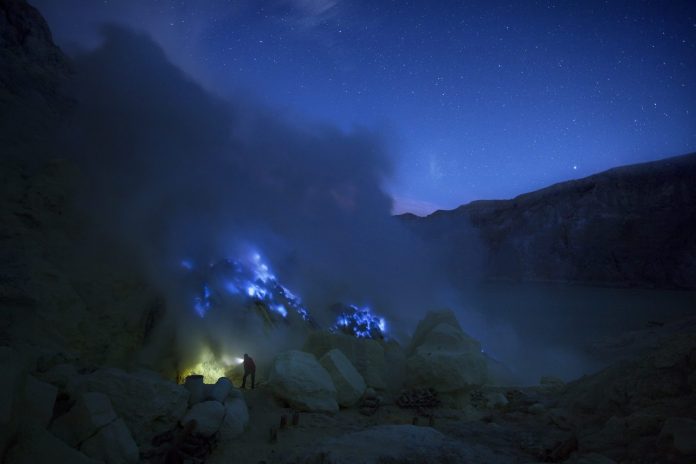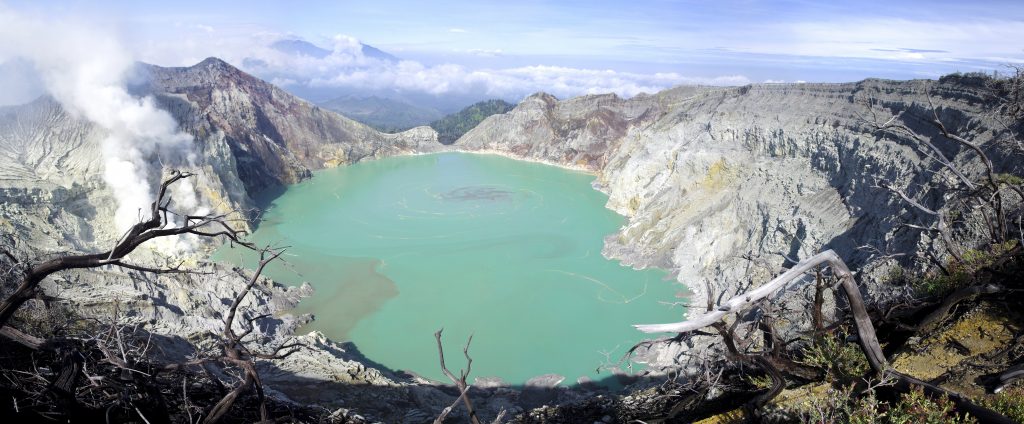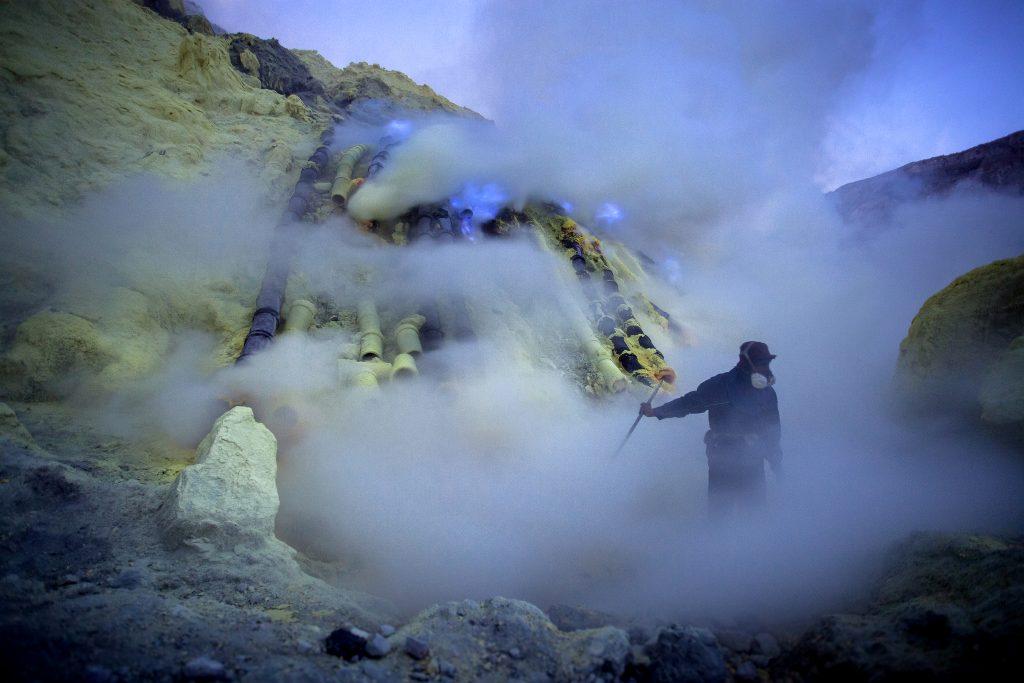
A natural climate changer
By Carl-Bernd Kaehlig
When I climbed the top of Indonesia’s highest volcano, Gunung Kerinci (3805m) in West Sumatra, I gasped for oxygen. Then as I neared the top’s crater, the smell of rotten eggs hit my nose. What had caused this terrible odour? It had come from a column of steam rising from the crater and wafting over the edge towards us hikers. The mucus membranes of our eyes, mouth and ears itched unbearably.
What’s that smell?
In chemical terms the cause of this smell and itch is hydrogen sulphide (H2S). Minor quantities are simply irritating, but – and this may come as a surprise – in large volumes H2S becomes odourless as it numbs the receptors in our noses and becomes lethal in a matter of seconds.
Gases play a major role in the eruptions of volcanoes, and sulphur dioxide (SO2) is an important one. If enough gases accumulate in the magma chamber of a volcano, the material in the vent blocking the gas may then be belched out, taking at times the whole top off a volcano like the proverbial cork popping out of a champagne bottle.
The biggest eruption in recorded history was right here in Indonesia’s Gunung Tambora. It happened in 1815, and this volcano on the island of Sumbawa was estimated to be about 4200m before the eruption. It now stands at 2850m.
This was followed by the Krakatau eruption in 1883 in the Sunda Strait, which was estimated to be about 2000m high before the eruption – resulting in a 300-metre deep underwater crater. Between the two, Gunung Tambora’s eruption catapulted about 150 km³ of volcanic material into the air, about eight times more than the Krakatau.

Volcanic eruptions and climate change
During huge eruptions, particles reach the stratosphere as high as 20 kilometres, and it has taken some time and advanced scientific research to find a strong connection between volcanic eruptions and climate change. It was apparently Benjamin Franklin, one of America’s founding fathers who first suggested the link in 1783. His idea was further worked out by, among others, W.J. Humphreys from the American Weather Bureau between the years 1914 to 1920, leading them to suggest that Gunung Tambora’s eruption caused “The Year Without Summer” in 1816.
The link between the 1815 eruption and epidemics in various parts of the world were made. In the vicinity of Sumbawa there were no rice harvests for about five years and many wells were polluted by the eruption’s ash.
Further afield in the United States, the temperature dropped by an average of up to 2°C leading to snowfall in the summer, droughts and crop failures with ensuing famines and larger-than-usual migrations from Europe to the United States for at least two years after the eruption.
Veil of sulphur
Apart from dust particles creating a sort of stratospheric dust veil, it is also argued that the large volume of sulphur dioxide (SO2) released into the stratosphere was the main reason for this climate change after 1815.
Sulphur dioxide is easily transformed into sulphate ions, negatively-charged particles made up of sulphur and oxygen atoms. Such atoms easily “team up” with water vapour, creating miniscule droplets or aerosols of sulphuric acids (H2SO4). This chemical process creates a veil of sulphur that strongly reflects the sunrays.
In the case of Gunung Tambora, this aerosol effect was visible in 1816 and 1817, when magnificent sunsets were created, which was believed to inspire the romantic sunset paintings of English painter J.M.W. Turner. Even the ice cores from the Arctic, which had marks like tree rings, were later confirmed to be a result of increased sulphur levels from that period.
Wind back 74,000 years ago to the mega-colossal eruptions of Sumatra’s Toba, which almost brought mankind to extinction, and you’ll see that a prolonged period of sulphur layer in the air probably led to the Earth’s cooling by 3–5°C over the six to ten years that followed thereafter.

A natural coolant
Sulphur in its various forms is not simply a “bad element” on Earth. Sulphuric acid may be highly corrosive and soluble, but it is also strongly dehydrating and oxidising.
Today, in Indonesia’s Kawah Ijen (Ijen Crater) in East Java, traditional sulphur mining is still practiced. It is here that the good and the “evils” of sulphur can be observed in its various forms. Breathing in sulphuric steam all day long damages the lungs of the miners and sulphur carriers, who make the perilous journey up and down the crater on a daily basis. All this is done for the sake of sulphur’s many positive applications in daily life, from bleaching sugar to producing nickel to the manufacturing of medicine for skin diseases, amongst others.
Sulphur as a temporary coolant of the Earth’s atmosphere may also one day be used as a geo-engineering solution to counter the greenhouse effects of carbon dioxide (CO2), which are also released during eruptions.
The causes of climate change are complex and its solution may not be as simple as injecting sulphur dioxide into the air to bring down the temperature – as one injects medicine to cool down a fever – but the solution is one that is not improbable.
For more stories and photos, check out Asian Geographic Issue 117.










